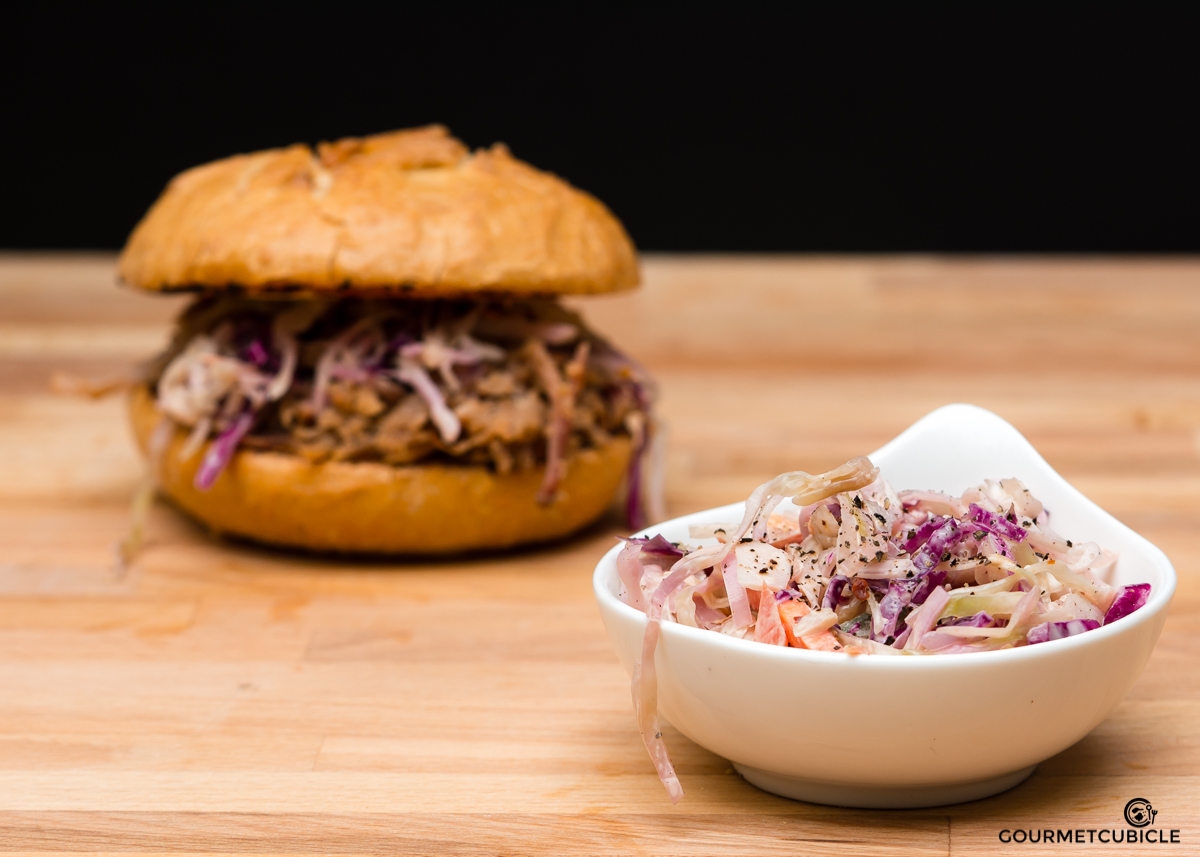Spicy Coleslaw
Let me preface this post by saying that this recipe is part of a bigger project that I've been working on with one of my colleagues. Coleslaw is the quintessential side dish of southern cuisine. It comes in different varieties from creamy and made with mayonnaise, to simple and made with vinegar, and with a variety of ingredients like shredded cabbage, carrots, vinegar, salt and pepper and sometimes onions, jalapeños, apples, mustard or even ketchup.
Even though I never tried coleslaw until I was in my twenties, I consider myself a big fan. I often times find myself judging barbecue joints based on the coleslaw they serve. I know that the main focus of a barbecue place should obviously be the meat they smoke, yet still I can't help but take the coleslaw into consideration when rating them. For me coleslaw was love at first sight. I remember eating it on the first day I moved to Austin four years ago. My hotel was really close by Rudy's BBQ so I decided to eat my first lunch there in the sizzling heat of the legendary summer of 2011.
In my book a good coleslaw has to be crispy but not raw, tangy but not sour, spicy but not too hot, and with just the right about of mayo to give it a subtle hint of creaminess. A coleslaw also should never be a soggy soup-like concoction with the mayonnaise overwhelming all the freshness of the cabbage and carrots. So how do you do all of that? First, use a mandolin to shred the cabbage really thin. Then purge it. Purging essentially is the process of brining the cabbage in salt, to get some of the water and that raw bitter flavor out of the cabbage.
I used kewpie mayo because I find it less heavy with a nice piquant aftertaste. I also choose to add leeks for a subtle hint of onion-like flavor. If finding leeks is challenging where you live, just use scallions or chives. Experiment with the flavors and ratios until you reach the combination that makes you happy. Enjoy!
Spicy Coleslaw
Yields about 1-2 quarts
Prep time: 20 minutes
Inactive time: 90 minutes
Ingredients
- 1/2 lb red cabbage, shredded
- 1 lb white cabbage, shredded
- 1 cup leek, thinly sliced (about 1/2 large leek)
- 1 TBS table salt
- 2 large carrots, peeled and grated
- 1 large jalapeño, halved, deseeded and finely sliced (about 1/4 cup)
- 2 tsp dried chili flakes
- 1/2 tsp white pepper
- 1/2 cup kewpie mayonnaise
- 2 TBS white wine vinegar (or apple cider vinegar)
- salt, to taste
- freshly ground black pepper, to taste
Instructions
- In a large mixing bowl, combine red cabbage, white cabbage and leeks. Sprinkle with salt and toss well. Set bowl aside and let the mixture rest for 10-15 minutes. This process is called purging the cabbage and it's essential for the texture of the coleslaw.
- After the cabbage has been rested, you'll see a lot of juice in the bowl. Dispose it and transfer the cabbage to a colander. Run it under cold tap water to get rid of the excess salt.
- Rinse the big mixing bowl and transfer the cabbage from the colander back into the bowl. Squeeze, handful by handful, the salty juice out of the mixture.
- Add carrots, jalapeño, white pepper and chili flakes. Mix to combine and add the mayonnaise and vinegar. Stir until the coleslaw is evenly coated. Taste and adjust seasoning.
- Cover with a plastic wrap and place it in the refrigerator for an hour before serving.
Notes
- Use the white part of the leek. For instruction on how to clean leek check out my Creamy Leeks with Pan Roasted Chicken recipe
- The green part of the leeks can be used for making stock.

























